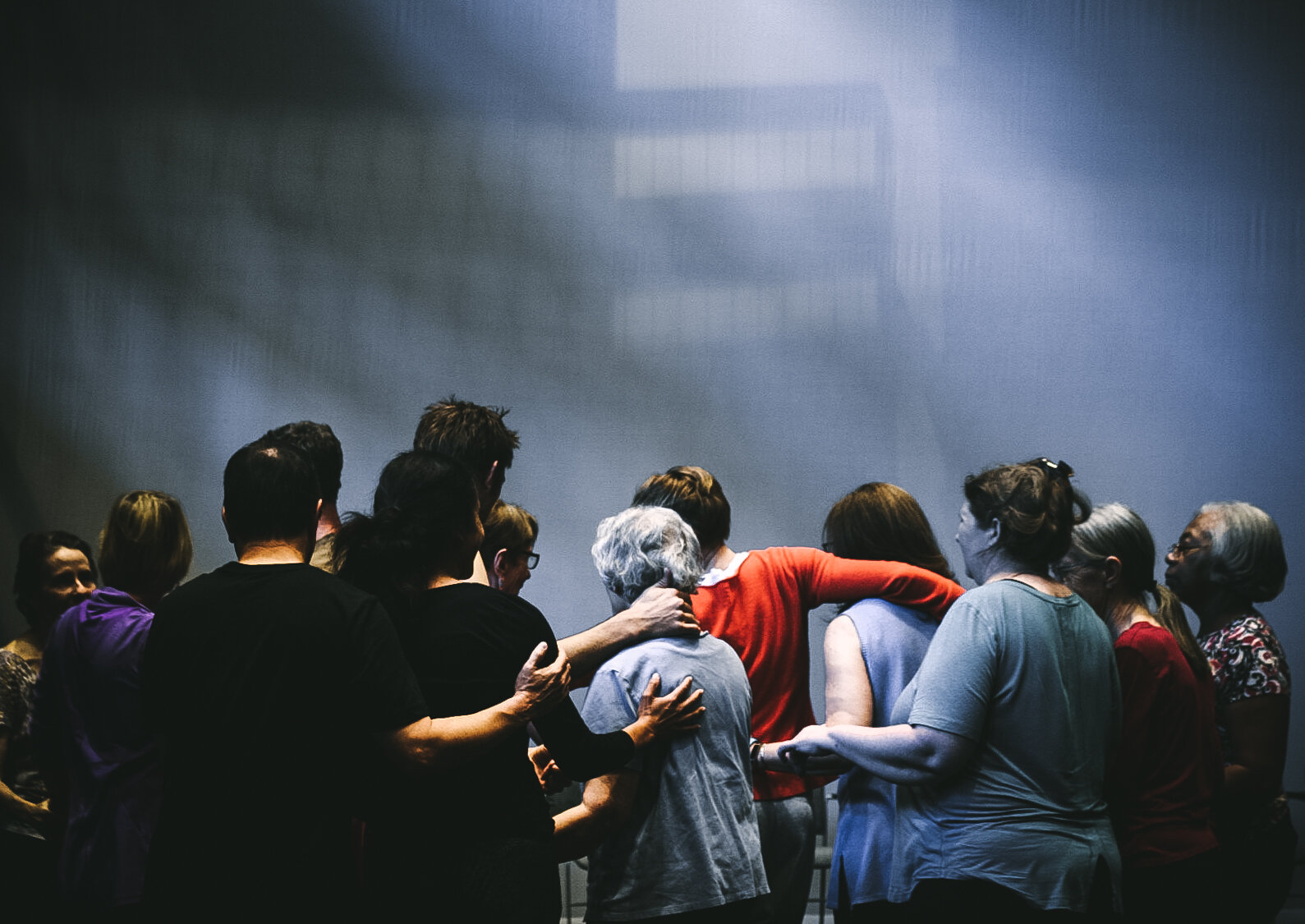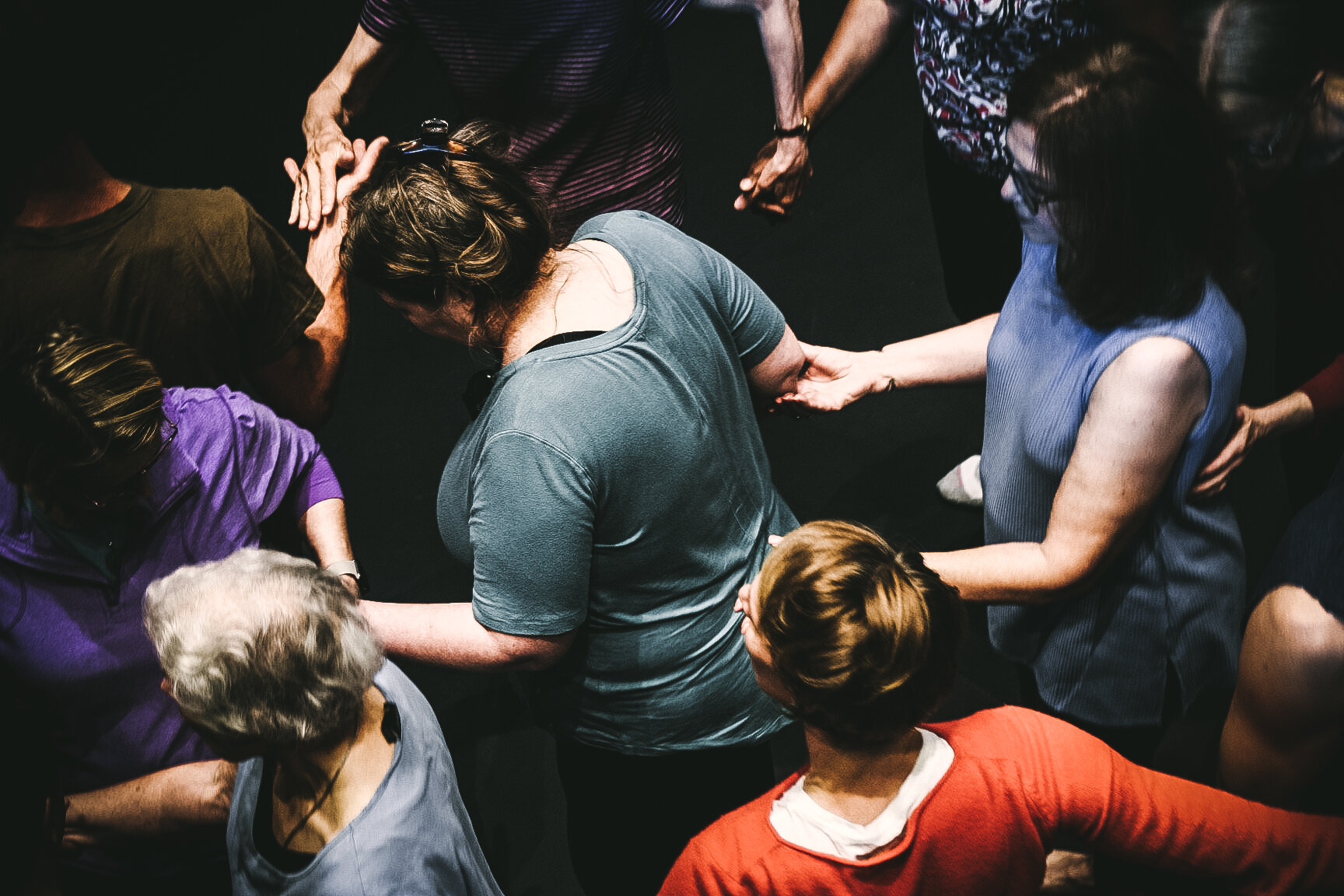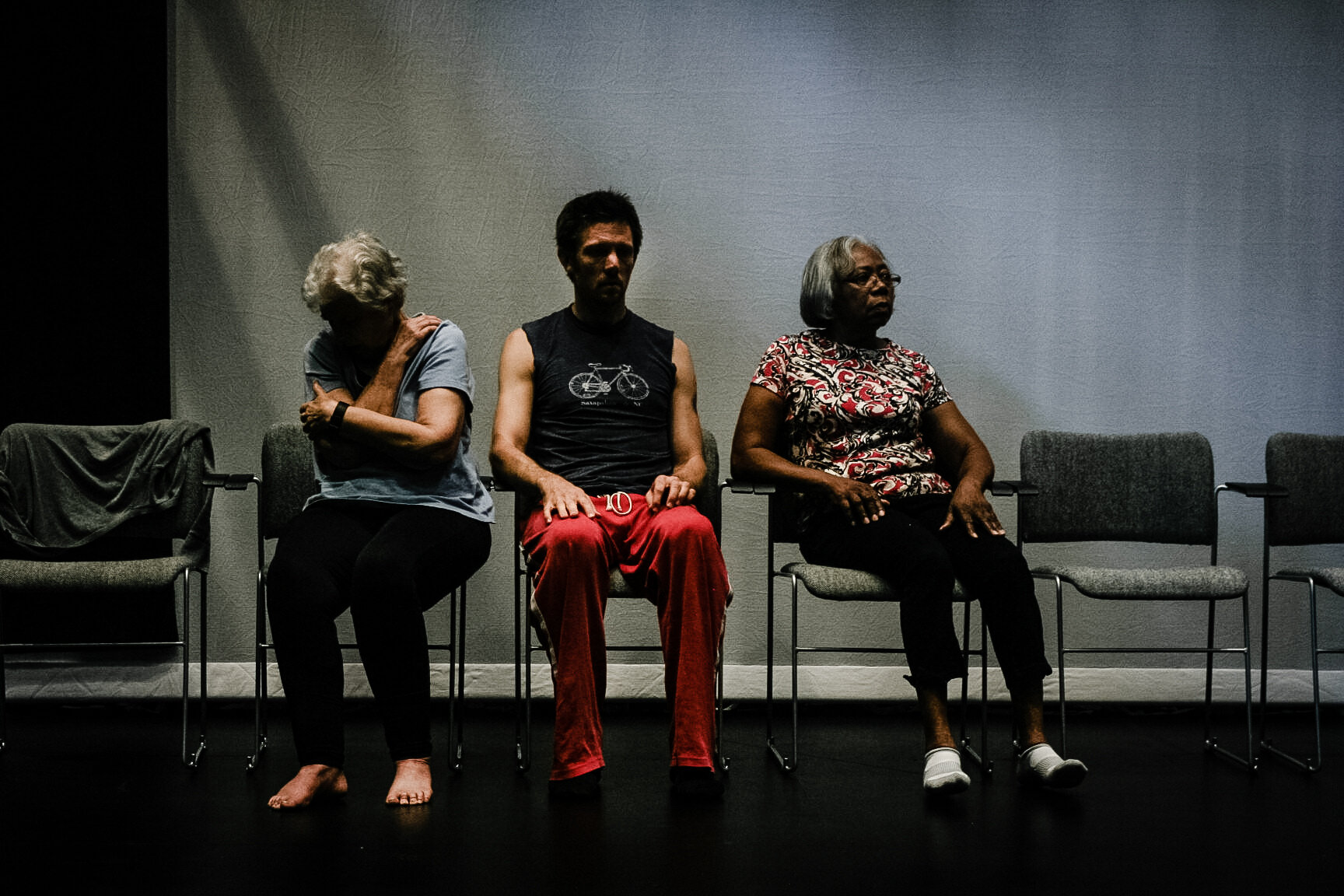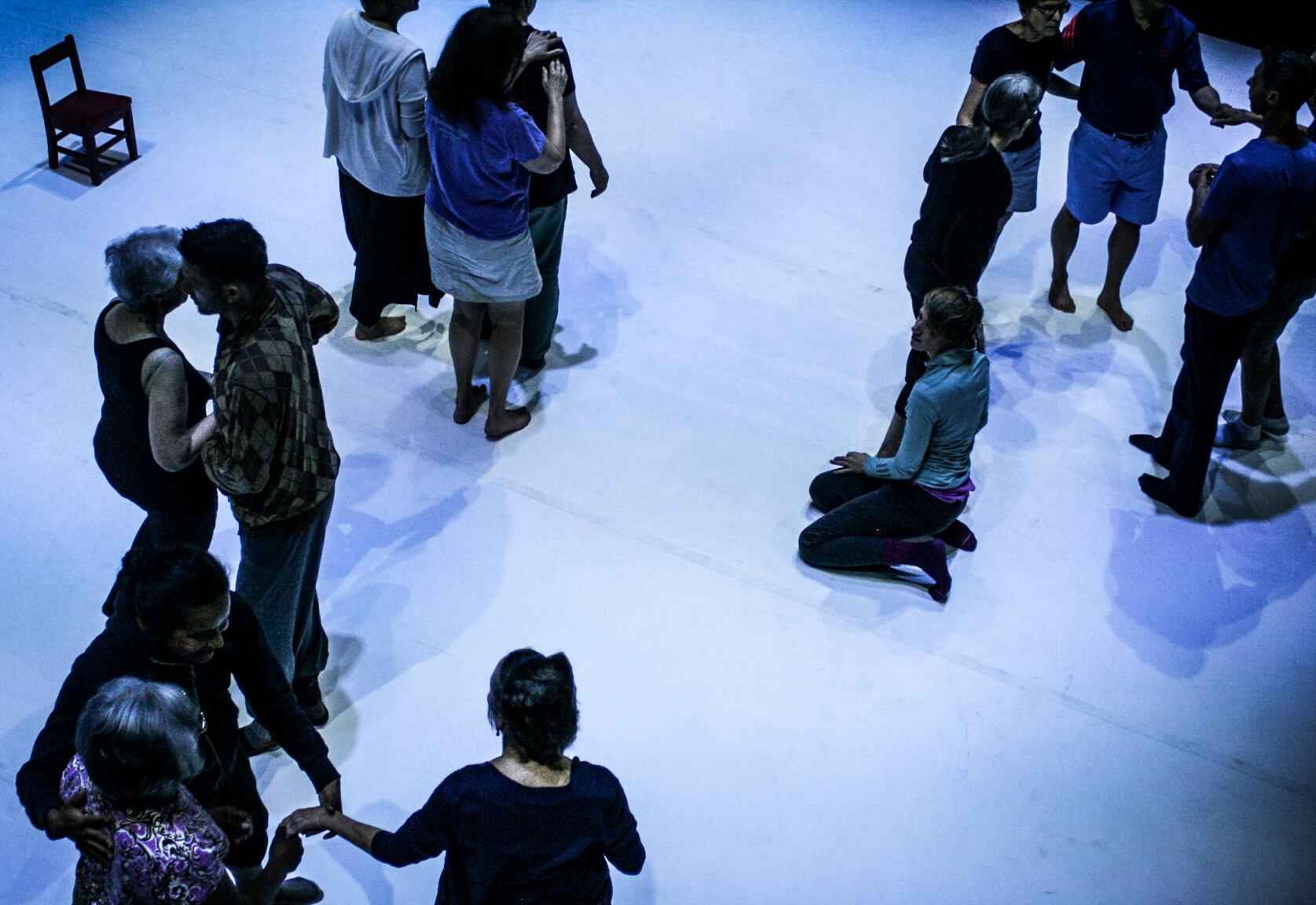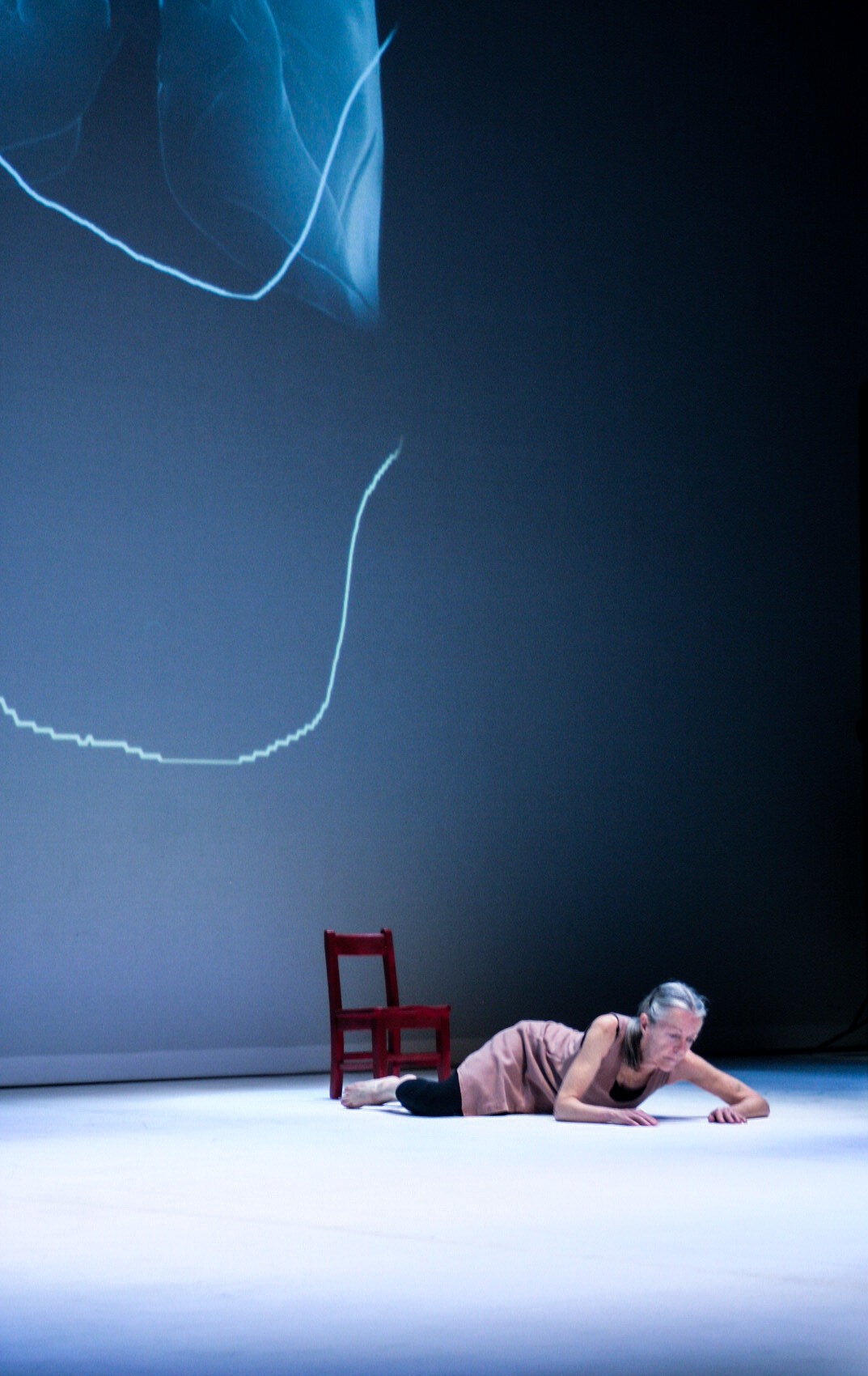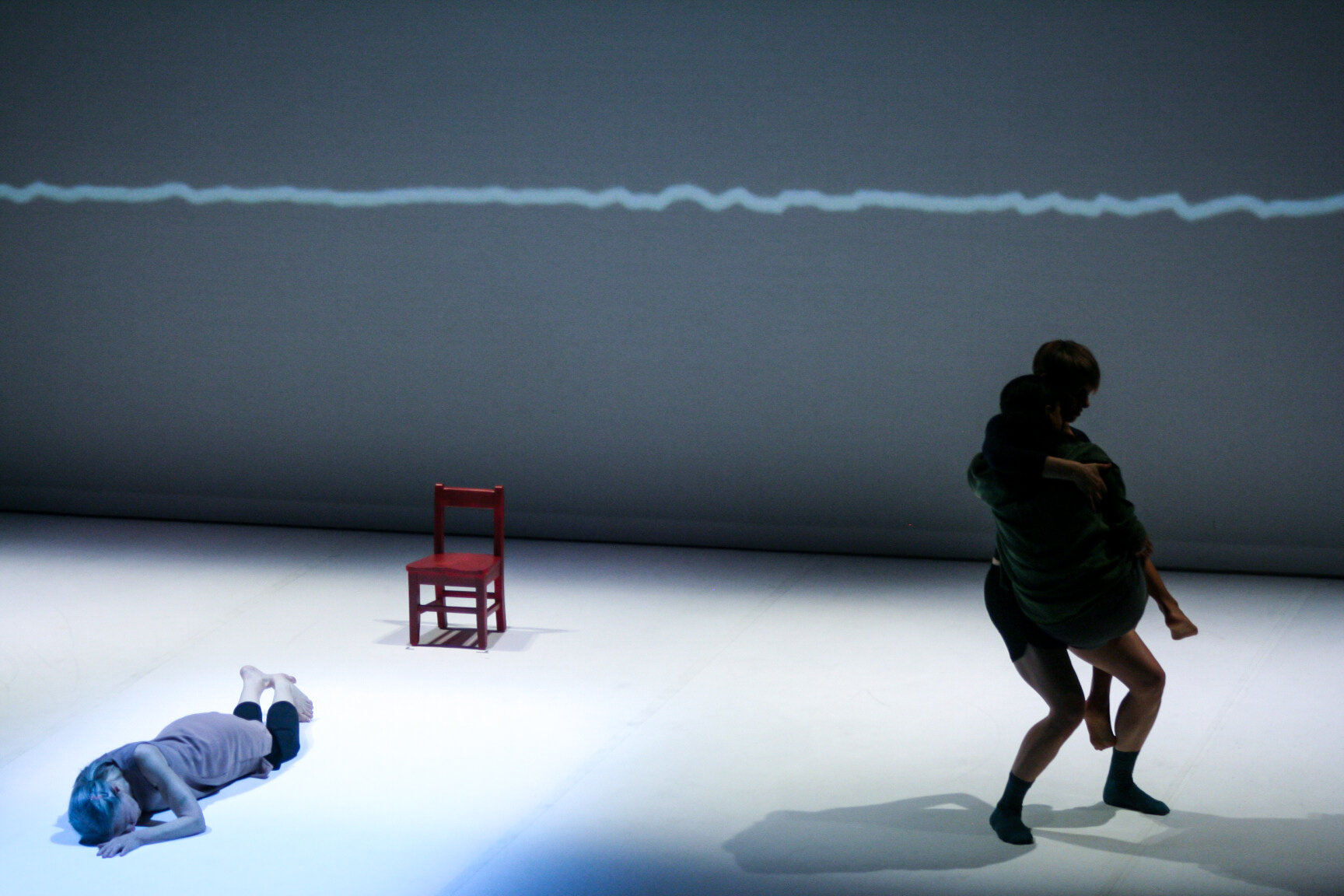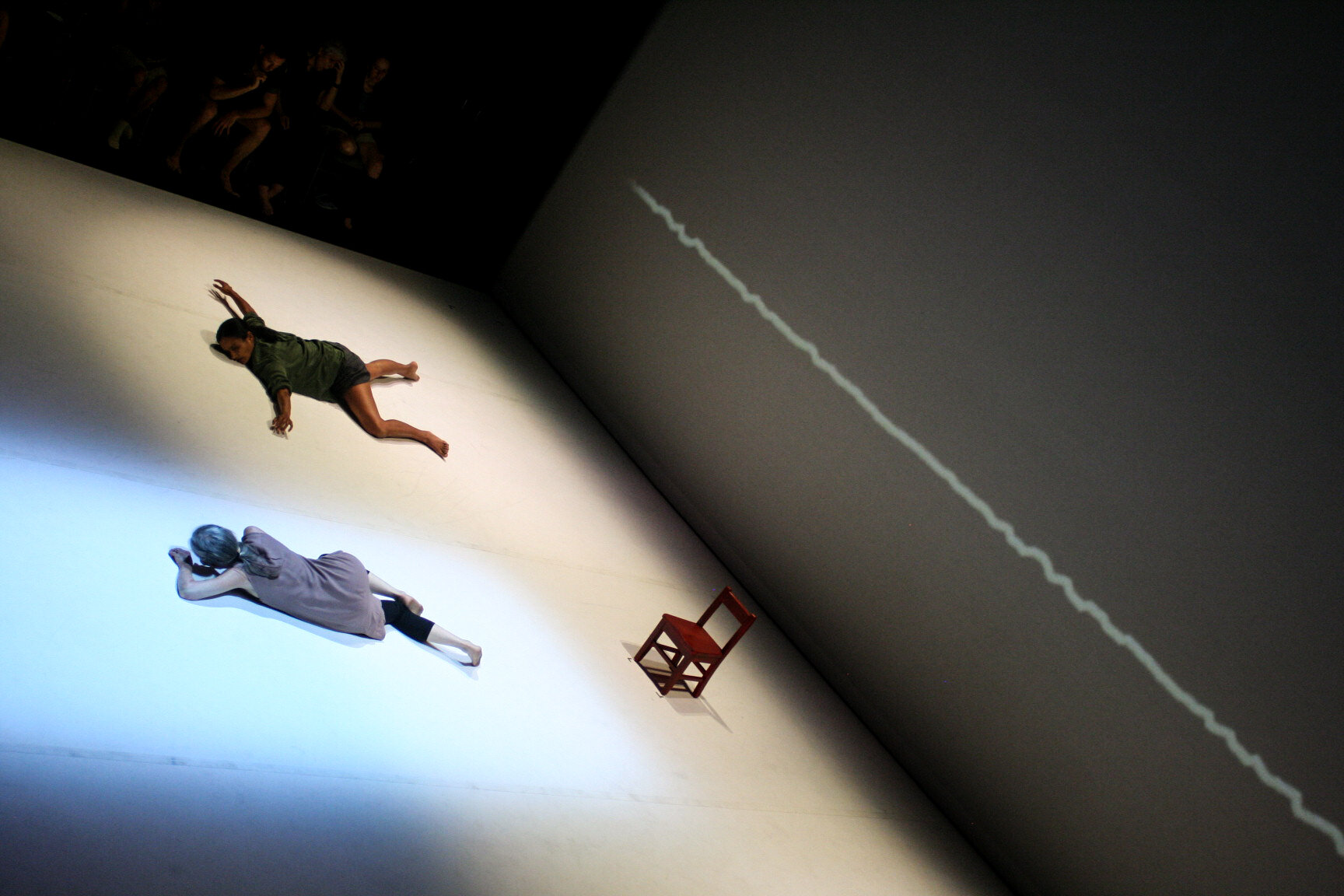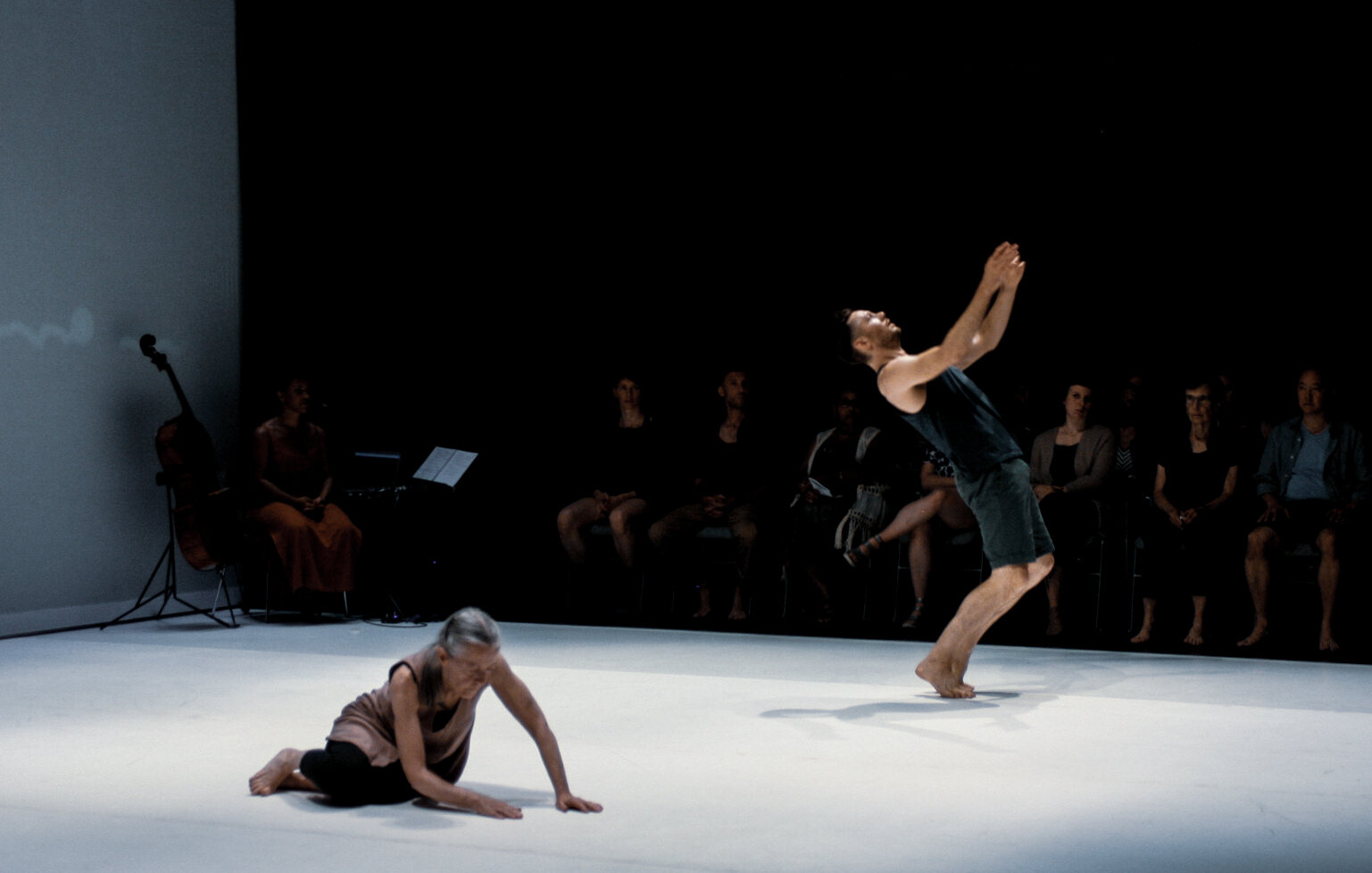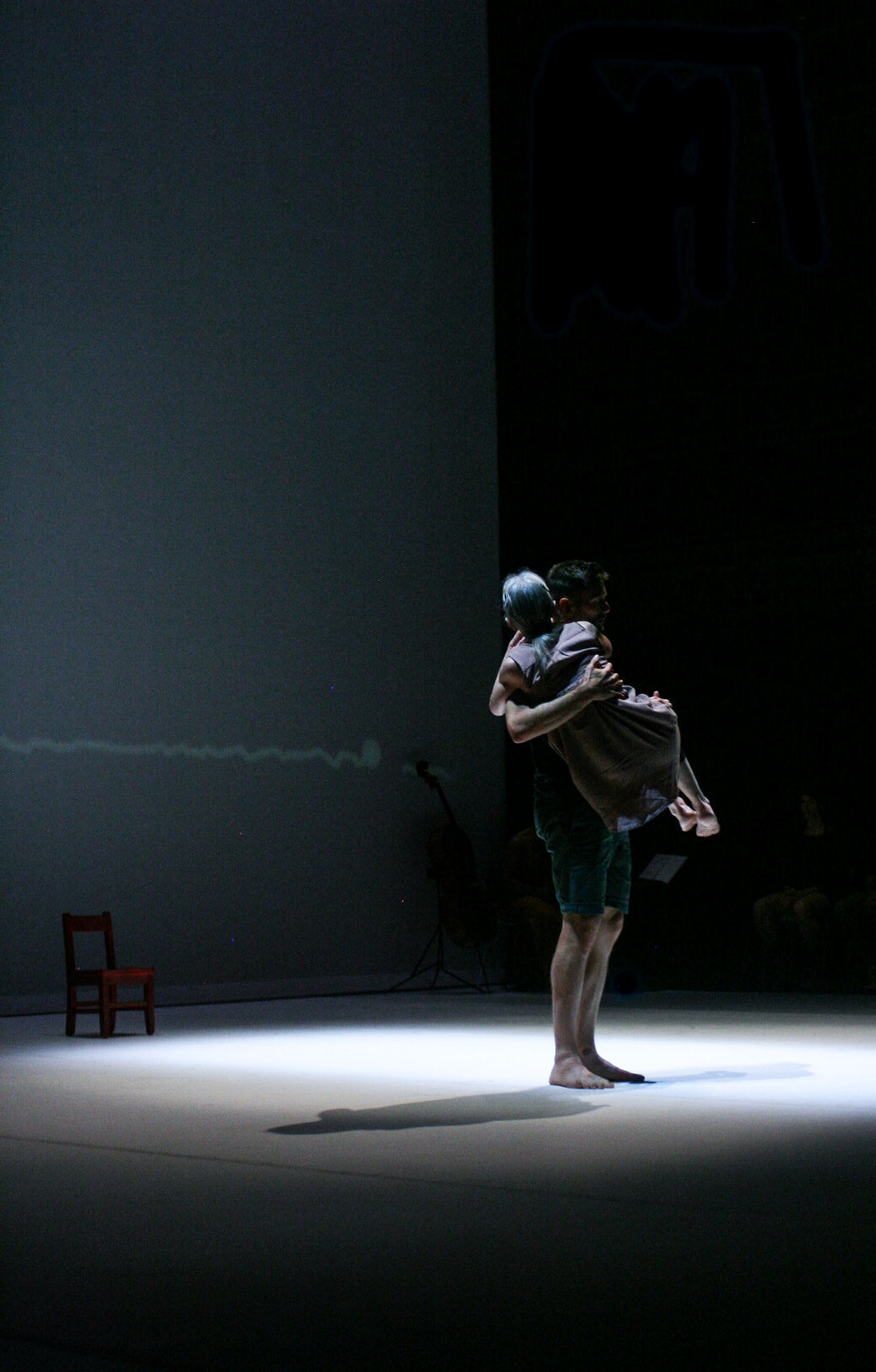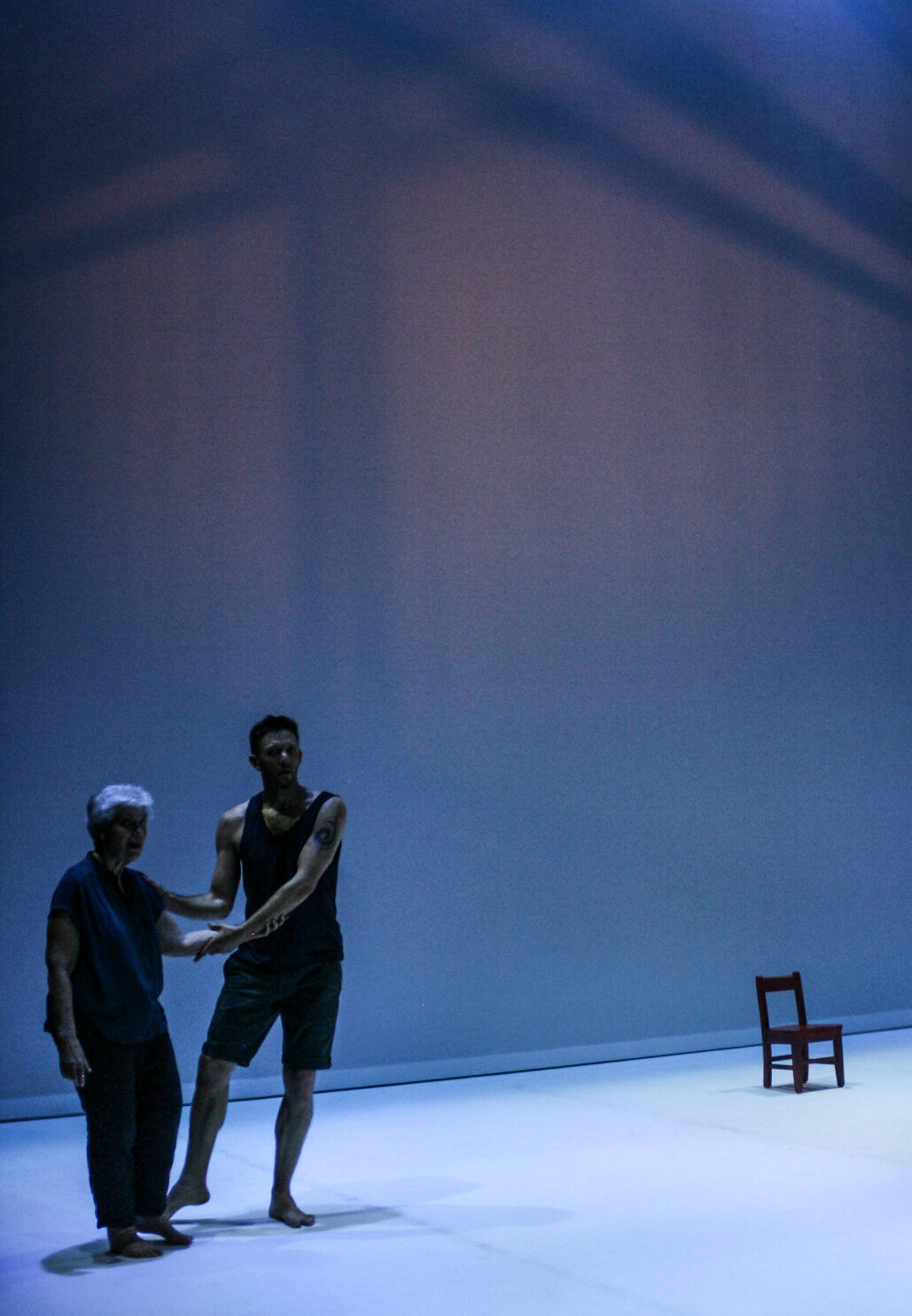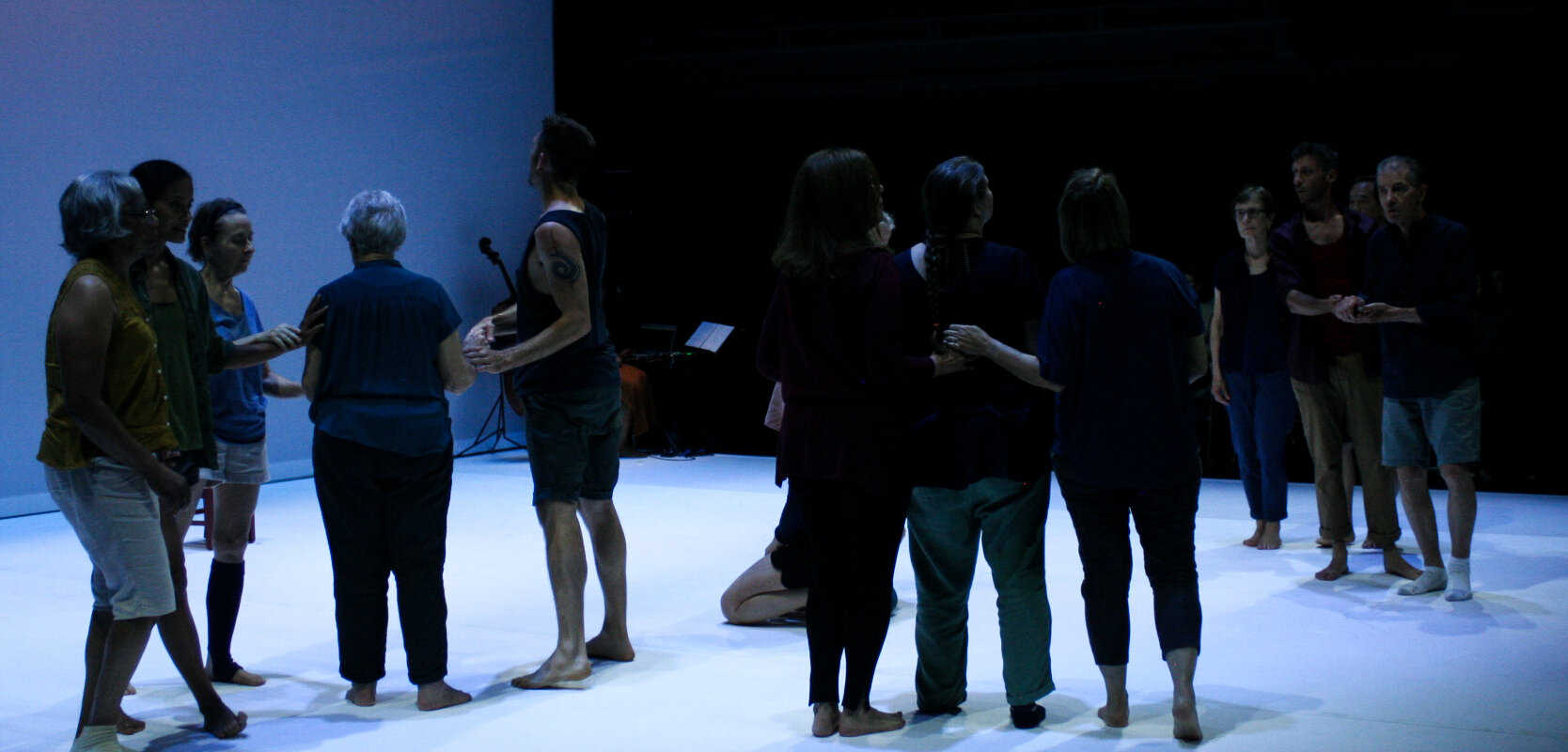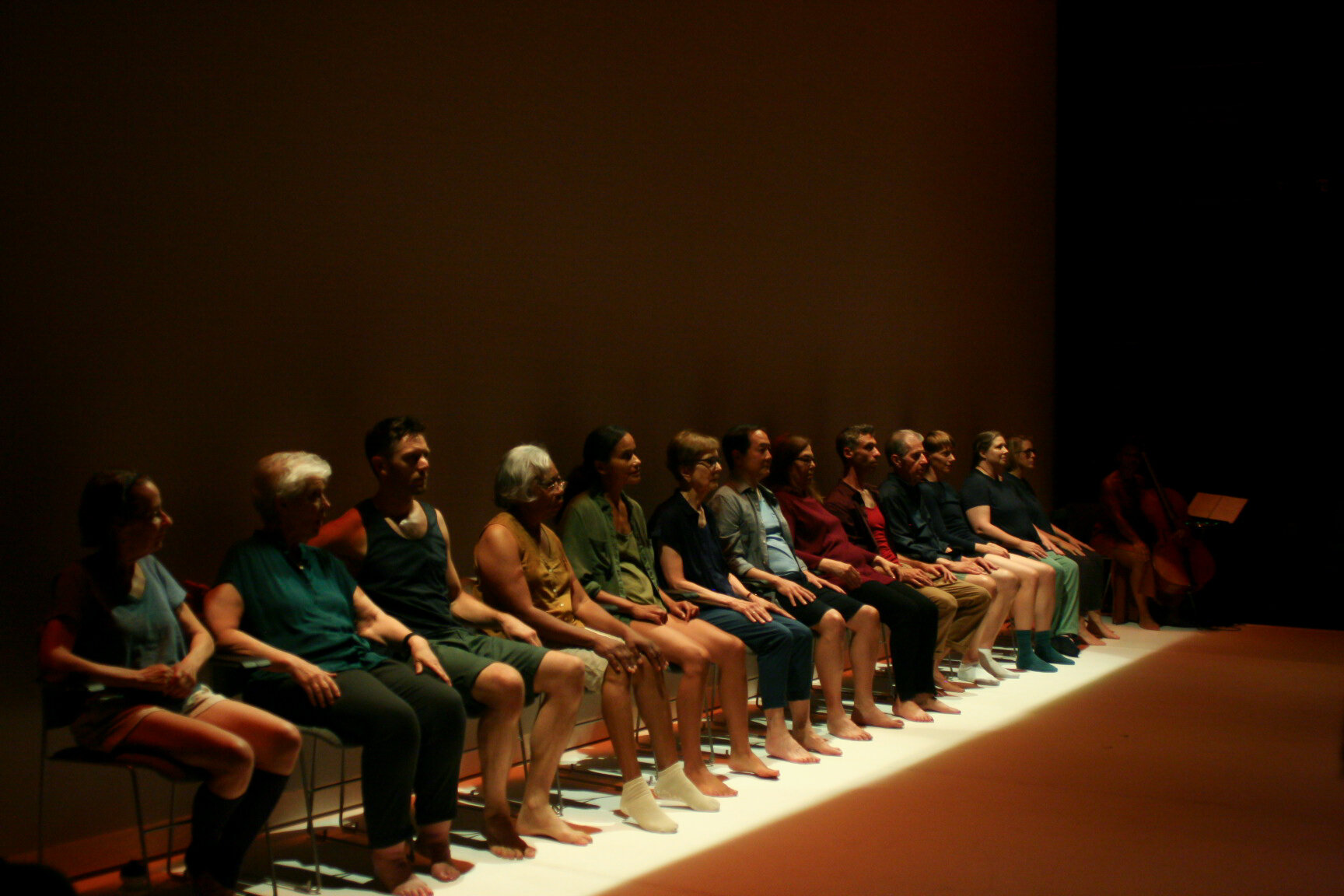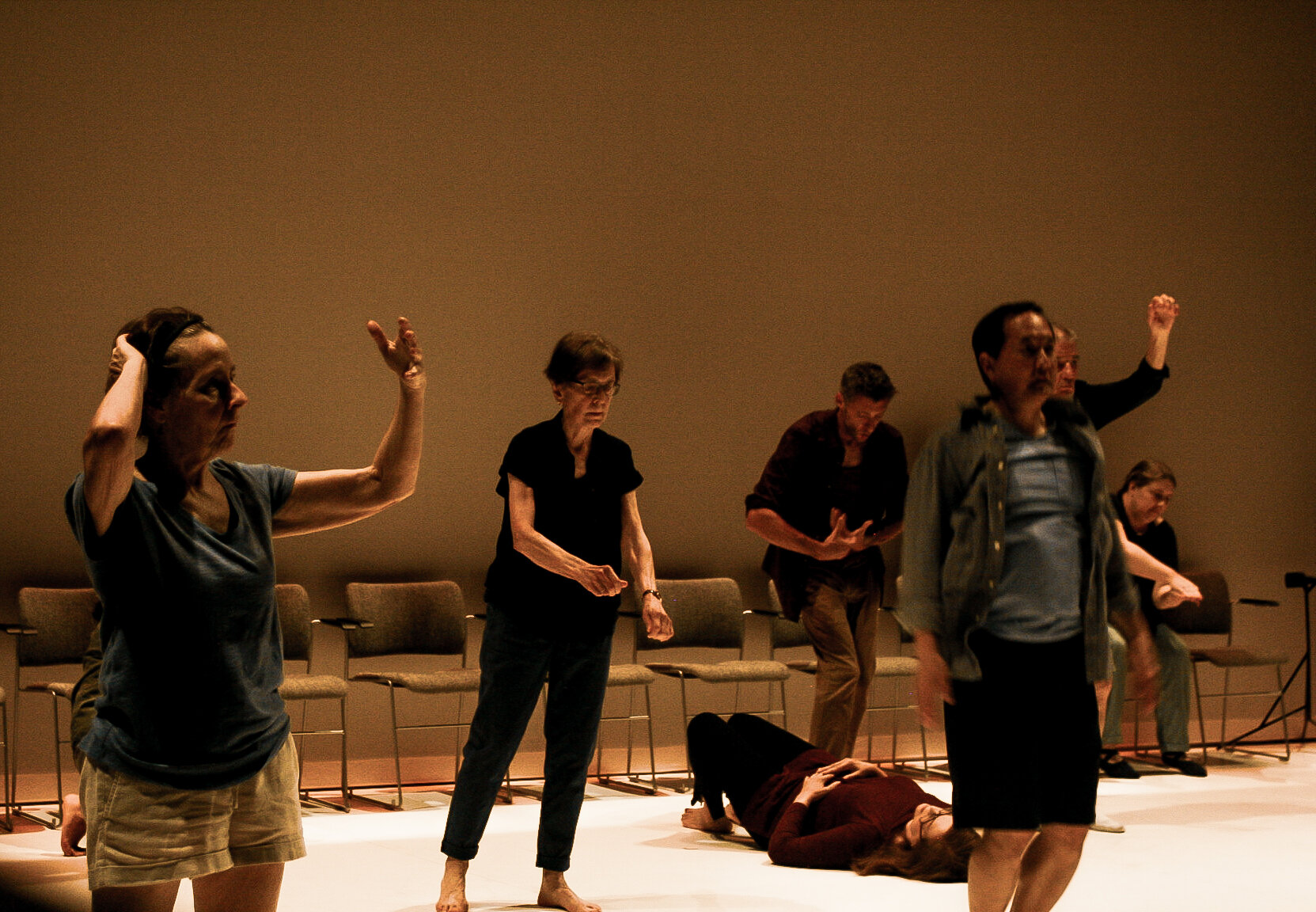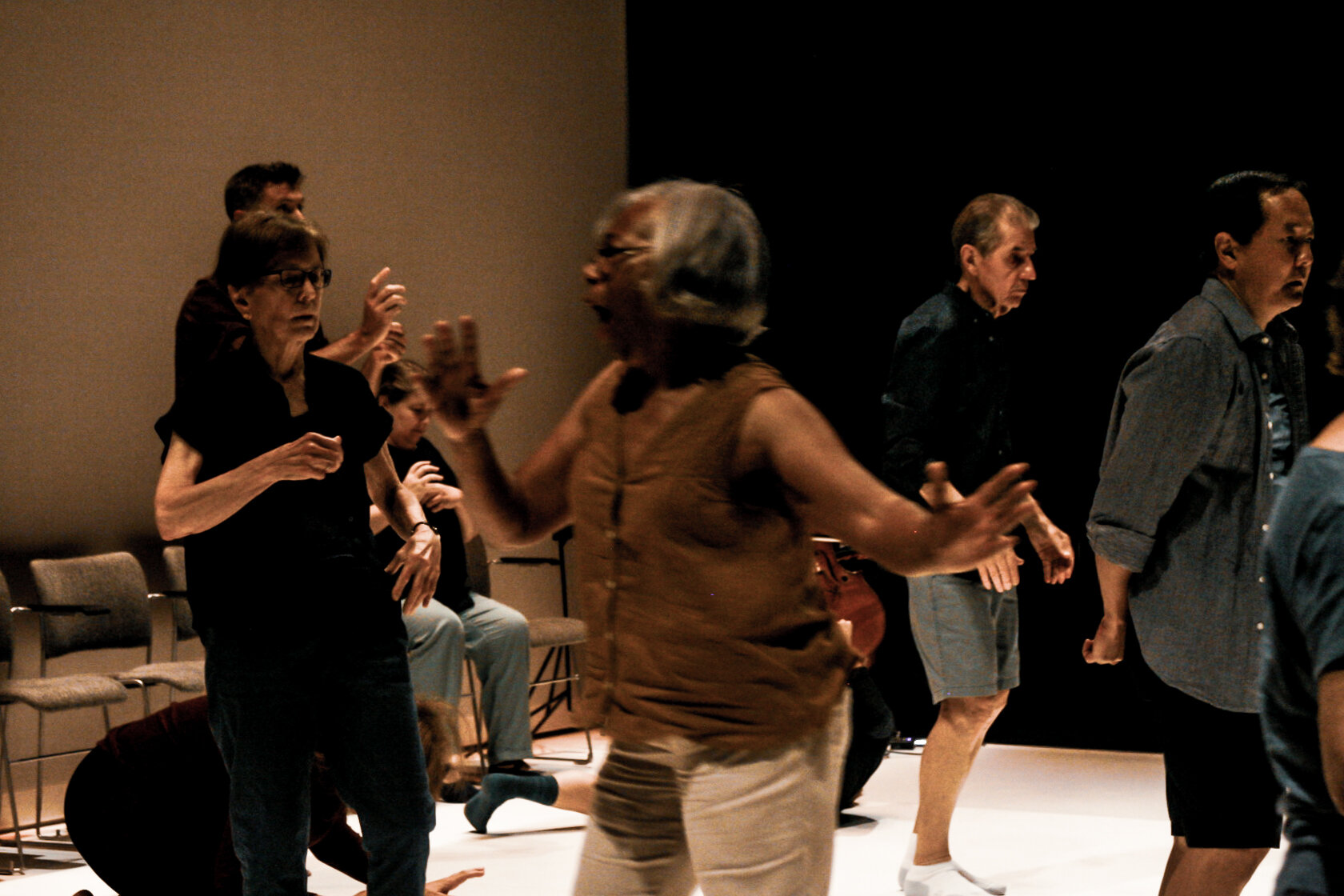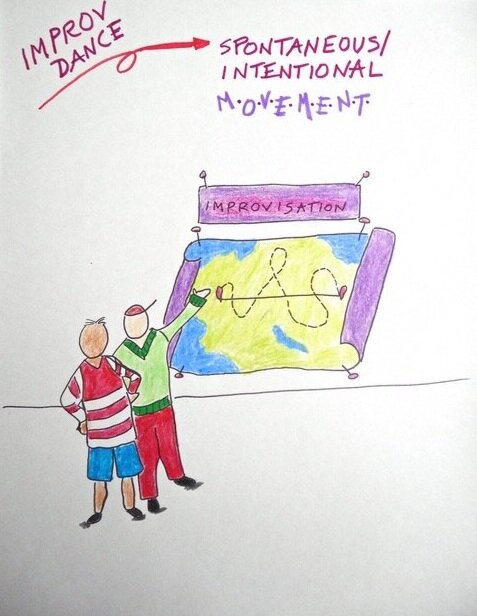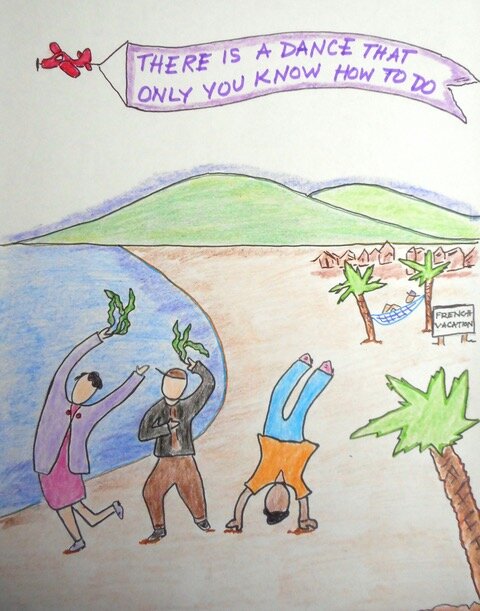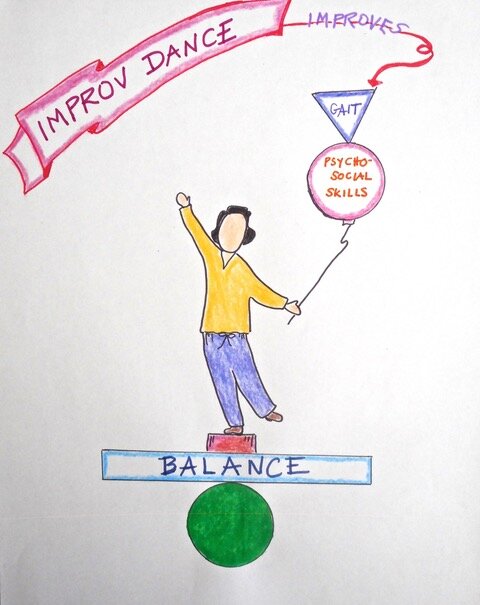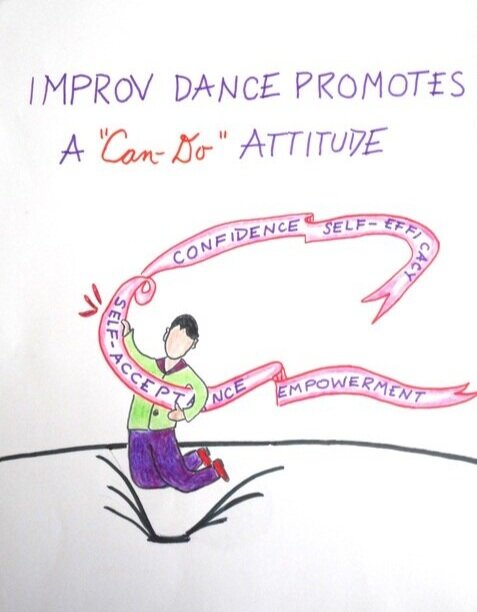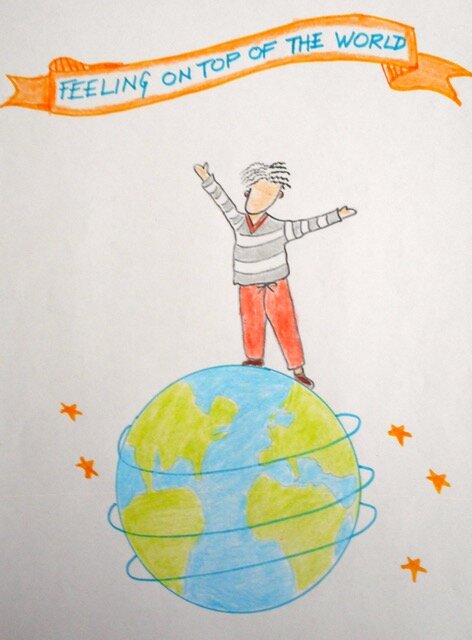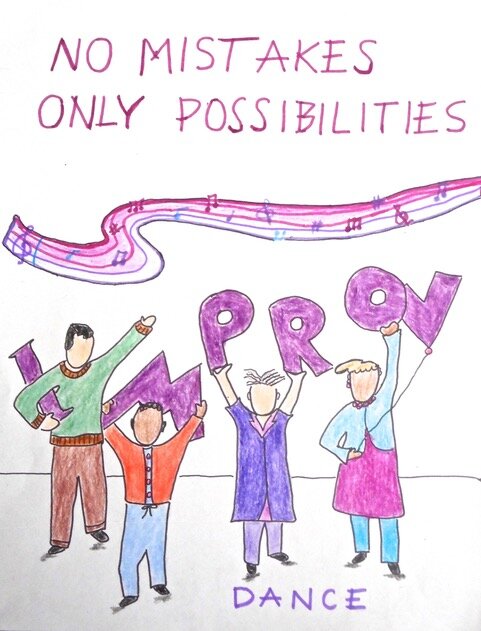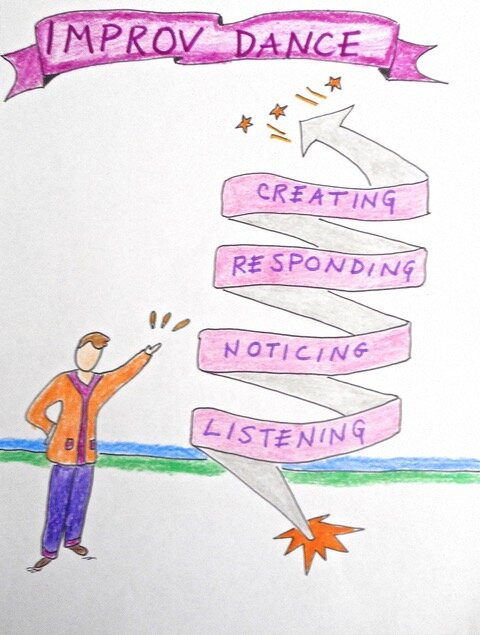
Origins
Moving Through builds on a number of groundbreaking projects and individuals who have pioneered new perspectives on Parkinson’s Disease and other movement disorders by utilizing innovative approaches in improvisational dance, movement research and somatics.As an artistic journey, this project began during the creation of the trio dance performance What Doesn’t Work (2013), commissioned by the Theater Freiburg (Germany). In What Doesn’t Work we (Noonan and Elizéon) initiated an artistic movement research focused on instant composition through methodical movement improvisations that played between physical states of control and non-control, and the notion of a “multi-layered body”, which manifests mental/emotional past and present experiences through multiple and complex simultaneous mental-physical tasks. In addition to utilizing contemporary dance and improvisation techniques, we employed a variety of somatic practices (somatics defined here as a field within bodywork and movement studies which emphasizes mindful perception of internal and external physical stimuli). This artistic research formed the basis of the exhilarating performance of What Doesn’t Work which toured Germany and the United States between 2013 and 2015.
This artistic interest eventually dove-tailed with groundbreaking work of Israeli-German project Störung/ הפרעה. Led by Noonan and Elizeon’s colleague, the contemporary dancer Monica Gillette, in partnership with Theater Freiburg and Exzellenzcluster BrainLinks-BrainTools of the University of Freiburg, Germany as well as with Yasmeen Godder Company of Tel Aviv. Störung /הפרעה built upon an earlier project titled BrainDance, placing people living with Parkinson’s Disease alongside professional dancers and medical researchers in non-hierarchical context of embodied exploration and movement research as a basis for developing new scientific approaches. Inspired by the project, Elizeon and Noonan invited Clint Lutes (core member of the Storung Team and founder of Danse Pour Parkinson or DaPoPa in Paris, France) for a residency at Culture Mill; this culminated in a workshop for the American Dance Festival’s Parkinson’s Movement Initiative (PMI). These approaches combined to foster a dynamic perspective on improvisational movement research in Moving Through.
Digging further, we discovered the work of Glenna Batson at Wake Forest University, who has done pioneering research on the effects of improvisational dance on people living with Parkinson’s Disease. Batson, working alongside Christina Soriano, Professor of Dance at Wake Forest, was able to show substantially increased brain function for people living with Parkinson’s using an fMRI after just a short period of improvisational Dance. This work led in part to ongoing research by Soriano and the development of the IMPROVment® program.
Beyond these specific projects, Moving Through is influenced by a whole host of practices, projects and approaches that range from traditional dance to somatics to innovative ideas about neuro-plasticity. For a more extensive look at these influences, please visit our RESOURCES section.
Moving Through is is firmly committed to the use of improvisational movement scores as an effective tool to cultivate adaptability, agency, curiosity and a sense of novelty, which may encourage neuro-plasticity. We maintain the conviction that a highly effective way to seed new scientific research is to bring clinical approaches to movement disorders into an embodied artistic context in which all involved partied engage in physical learning and movement research.
“...despite the allure of beautifully embroidered fantasies, the body itself is more than enough.”

They Are All
They Are All is a performance created by Murielle Elizeon and Tommy Noonan, and commissioned by the American Dance Festival. It involved a mixture of professional contemporary dancers and dancers living with Parkinson’s Disease and other traumatic brain injuries, and comprised the first phase of the Moving Through project. The performance premiered on June 25th at the Rubenstein Center for the Arts, as a part of ADF’s 2019 summer festival following 12 weeks of research and development workshops.
Photos by Sarah Marguier.
““It’s about bodies rejoicing within limits rather than despairing beyond them. It’s about age and time moving in and out of phase, now concordant, now grinding. It’s about how each person’s reality is scaled to the spread of their arms, the length of their stride. It’s about the beauty of the possible and the possibility of transcendence.” - ”
Read IndyWeeks’s FULL PREVIEW HERE and the subsequent REVIEW HERE or watch the entire performance below
Our Approach
Our approach is based upon a careful exploration of the Contemporary Dancer’s tools — a holistic approach which takes into account the whole individual as comprised of physical, cognitive, emotional and social parts, and is engaged through layered contexts of individual, relational and communal practices.
The Contemporary Dancer’s Tools
Though dance has many forms, and has been widely studied and employed to mitigate the effects of Parkinson’s Disease, our project defines dance broadly as an act of becoming through movement with an engaged awareness. More specifically, while dance forms such as Ballet, Modern or Jazz tend to center codified choreographic forms and aesthetics, Contemporary Dance is marked by the employment of a wide variety of bodily tools and techniques in the generation of movement, ranging from traditional dance practices to approaches sourced from other fields. This layered approach in Contemporary Dance renders it a versatile tool for embodied learning, processing and integrating experiential knowledge as distinct from primarily verbal-analytical processes. It is a gateway to another form of knowing.
Contemporary dancers are trained to be able to adapt to a multitude of performance situations and creative styles. Unlike dancers in more formalized dance techniques which require a higher degree of specialization, Contemporary dancers and choreographers employ a broad spectrum of techniques and non-dance movement practices to realize their own unique creative voice. These include daily practices of mind-body connection which make use of multiple physical, cognitive, social and emotional tasks in both the studio and on stage — practices including but not limited to meditation, yoga, Body-Mind Centering, improvisation, martial arts, voice, theatre, music and so much more beyond the traditional dance field.
By integrating all of these influences towards the goal of self-development within their professional lives, Contemporary Dancers become versatile in adapting physically, mentally and emotionally to the constantly shifting situations demanded in their job. In the following Key Elements, we will share with you how we use and adapt our professional skills to the needs of dancers living with Parkinson’s Disease in Moving Through. We acknowledge that the way we use these particular tools is connected to our identity as people and as artists, and does not represent a recipe or a technique in itself. Moving Through is not a method to be taught or learned; it is a road map — a framework that can potentially allow other artists to create and collaborate with Dancers living with Parkinson’s and other movement disorders according to any number of different designs.
Why Improvisation
Drawings below by Moving Through participant Carol Vollmer
Our holistic approach is based upon layered exercises, formats and contexts which create links between physical movement, cognitive tasks, emotional engagement and social interaction. It is not a single method, prescription or set of activities, but rather a nuanced understanding that each person is a complex individual who must be engaged differently across multiple aspects of their being. Our thread that ties the different aspects of this engagement together is the creative process. When creativity is enabled through movement, an individual has the potential to be at once physically, socially, emotionally and cognitively engaged. Our approach is based in improvisational scores and frameworks, because we understand improvisational movement to be a particularly dynamic and effective mode of engagement. Furthermore, improvisational movement is a form of bodily practice that can serve as a means to adapt for efficiently and creatively to a complex world. This is made clear in by the definition of Improvisation given by inclusive dance specialist Alito Alessi, director and founder of DanceAbility International:
“To Improvise is to arrive again and again in moments where there are many choices. Not knowing what to do, and not having something we are supposed to do, helps us sense and pay attention to whatever is happening...”

KEY ELEMENTS
Floor Work
“A practice is a conscious choice we make to train ourselves so we will behave and act in a particular way so that it becomes embodied or part of who we are. To choose a practice is to have a narrative why one is committing to this practice.”
(Influence: Somatics and Modern Dance) Professional dancers train extensively in ways to move in and out of the floor with fluidity and ease. Unfortunately, modern western lifestyles in combination with aging and Parkinson’s disease can render unavailable many otherwise natural pathways to and from the floor. Moving Through emphasizes movement pathways and coordination practiced by dancers, towards rediscovering these possibilities of movement by creatively building movement classes in which dancers living with PD practice safely finding new relationships to the floor as a potential partner rather than a potential threat. We believe that integrated systematic, functional, somatic and creative practices and strategies going to and from the floor can lead to a substantial decrease in the risk and severity of falling.
Walking
“A generative practice is a conscious choice to embody a behavior that can be used in whatever situation we find ourselves. It’s a commitment to being in the world. It is life affirming, creative, and it produces a reality by how we orient to our life specific situation”
(Influence: post-modern dance, somatics, Qi Gong) Since post-modern dance, choreographers have interrogated the mechanics and repetitions of pedestrian movements such as walking as choreographic material that can be “danced” by everyone. Contemporaneously, the development of the Feldenkrais Method was a western approach which invited people to effectively re-pattern their walking habits. An older and Eastern movement form, Qi gong emphasizes flow of movement, torso, arms, pelvis and spine mobility. As dancers, we regularly make use of such approaches that actively investigate pedestrian movement. In Moving Through we invite dancers living with PD to explore walking and in a slow, conscious, systematic and creative way, so that they feel more confident in their ability to navigate more complex daily walking.
Body Stories
(Influence: Tanztheater & Experiential Anatomy) Our approach to dance claims that each of our movement is a complex combination of our physical, emotional, cognitive selves in a specific moment when the movement is done. Asking people to dance their story taps into the amazing potential of each individual to build a sense of empowerment, resilience and agency through the expression of their uniqueness. Such prompts may be expressed even beyond dance, through whatever creative medium most fits the individual. For example, watch musician and Moving Through collaborator Shana Tucker apply a Body Story prompt to improvisational cello.
As a part of They Are All, musician Shana Tucker translated the Body Story prompts into a live musical improvisation. A new version is created here in June 2020 at NorthStar Church of the Arts in Durham, North Carolina
Seated Mindful Movement
Dance and somatics educator Annie Dwyer gives an example of functional range of movement based upon Laban-Bartenieff fundamentals which progress towards an embodied exploration of inner and outer space, spherical and linear movement, inner connectivity and outer expression. *For a brief, clear explanation of Laban Movement Analysis and space, see: Making Connections: Total Body integration Through Bartenieff Fundamentals by Peggy Hackney
(Influence: Mindfulness / Yoga / Qi Gong) These non-dance techniques and practices provide a platform to develop self-reflective body awareness, presence and resilience. They help performers to uncover and make layered use of their whole selves in the dance studio and on stage, while also incorporating functional range-of-movement exercises into a creative setting. We incorporate elements of these techniques into Moving Through classes to help dancers with Parkinson’s develop tools to welcome and allow new potential within their own evolving circumstances.
Performance
The context of creating a performance together is about so much more than a common goal as a motivator for action and collaboration. When guided appropriately, the creation of a performance in a communal setting allows the possibility to be to be supported by friends and colleagues in moments of doubt and vulnerability, to be seen and witnessed as a whole complex individual and not as an object or a patient. The context of realizing a performance as part of a group can be a powerful method of fostering self-empowerment, self-acceptance and personal agency.
This clip from the performance of They Are All at the 2019 American Dance Festival shows a moment in which professional dancers and people living with Parkinson’s Disease perform in a sold-out theater at the Rubenstein Center for the Arts in Durham, North Carolina
Other Important Considerations
We advocate for a program of layered purposeful action towards a common goal. Dancers’ whole selves are fully engaged when they work together daily in the studio towards the common creation of an artwork. Moving Through maintains that through a combination of daily individual movement practice, relational practice with others in a class, workshop or discussion settings, and communal practice in the creation towards a common creative goal with a group, engagement between multiple aspects of the individual is maximized.
We believe the embodied creative process, based upon the Dancer’s Toolkit, contains all the necessary ingredients to effectively engage individuals living with Parkinson’s Disease towards mitigating both the motor and non-motor effects of the disease. In particular, we believe our approach in particular has the potential to imbue individuals with an increased sense of agency in the effective management of their own symptoms through an combination of appropriate peer support, family support, community support and professional medical support. This potential to mitigate symptoms and increase agency is indeed an important indicator to more long-term success in managing the effects of Movement Disorders such as Parkinson’s Disease.
We believe the quality teaching is paramount to the effectiveness of the approach, and not only includes familiarity with skills and exercises described above, but demands the creative presence and interest of the guiding artist(s). As teachers and guides in Moving Through, we must actively commit to relationship with our colleagues and collaborators, and be constantly guided by an artistic spirit of curiosity, playful interrogation and discovery in every moment of class and creation.
“The benefits of creative dance for Parkinson’s extend beyond the physical and emotional to include tangible improvements in cognition. I believe that out of all my Parkinson’s-related activities, it is dance that uniquely challenges and fortifies the mind-body connection.”
Working Group & Contributors
A key component of Moving Through is our interdisciplinary working group, composed of professional dancers, clinicians, researchers, educators and other specialists living with and without Parkinson’s Disease. The goal of the working group is to provide a trans-disciplinary set of perspectives which can both continue to refine our approach and simultaneously seed new possibilities for research into Parkinson’s Disease and other Movement Disorders. Below, please explore perspectives from various members of our Working Group.
Dr. Glenna Batson (PT, Sc. D., MA) is an independent researcher/lecturer in dance, Somatics and science. For the past 35 years, she has honed a trans-disciplinary approach to the study of embodied cognition by bridging dance, science and somatic studies.
ANNIE DWYER has been teaching dance for over 40 years. She has trained generations of young dancers ages 4 to 18 in both public and private schools, most recently for the past 29 years at Carolina Friends School. She facilitates classes with a unique blend of modern dance, Laban- Bartenieff fundamentals, and somatic practices and a focus on creative process.
Murielle Elizeon is a French professional choreographer, dancer and teacher with over 20 years of experience working in Europe and the United States. A certified DanceAbility instructor in inclusive dance, Murielle has worked with professional and amateur dancers ranging from 5 to 95 years old. Photo: Emily Miller
Dr. Jeffrey M. Hoder, PT, DPT, NCS is Associate Professor of Physical Therapy at Duke University, specializing in adult neurological rehabilitation related to the examination and management of adults with neurological deficits.
Cathy Moore is a retired lawyer whose prior experience with dance was club dancing and several months of ballroom dancing lessons. Since being diagnosed with Parkinson’s Disease, she has explored Mark Morris’ Dance for Parkinson’s classes, and has since been transformed by the experience of working in the They Are All performance and Moving Through.
Dr. Elisabeth Barbier is a French Neuroscientist and Filmmaker with a keen interest in Contemporary Dance. She has followed Moving Through since its launch and is currently working on a short documentary film about the project. Photo: Emily Miller
Paul Molina is a retired physician who lives in Chapel Hill, North Carolina. After receiving his undergraduate degree from Johns Hopkins University, he completed medical school and radiology residency training at the University of North Carolina School of Medicine. He and his wife Grace have three beautiful daughters, Jamie, Sarah and Lindsey.
Shana Tucker is an award-winning cellist and vocalist. She has collaborated on various projects with Elizeon and Noonan, creating the original music score for They Are All at ADF in 2019. She is an ongoing collaborator in this project . Photo: Chris Ubik
Tommy Noonan is a professional dancer and choreographer whose work has been presented extensively throughout Germany, France, Portugal, Poland, Switzerland, Austria, Spain, Mexico and the United States at major festivals and site-specific locations alike. Photo: Emily Miller
Carol Vollmer has been engaged in the visual arts as an award winning tapestry weaver, web designer and graphic recorder. Her creative spirit fueled her work as a medical librarian and educator in the Dept. of Veteran Affairs. She is a mom, grandmom, gardener, harp player and avid maker of altered books. Photo: Emily Miller
Vision
As we work with collaborators and advisors across multiple disciplines in the next year, our approach and methodology will become further specified as we hope to use the artistic basis of our approach to seed new perspectives in scientific research on Parkinson’s Disease and movement disorders.
In the spring of 2021, we will present our perspectives at an international conference on cross-sector collaborations in dance, at the Haw River Ballroom in Saxapahaw, NC.
As a project based in artistic approaches, Moving Through continues to be driven by a joyful, bold and curious notion of What If?…

This project is funded in part by ADF with a grant from South Arts in partnership with the National Endowment for the Arts and the North Carolina Arts Council. This project is made possible in part with a grant from the Kenan Charitable Trust. Additional support is provided by RTI International.

